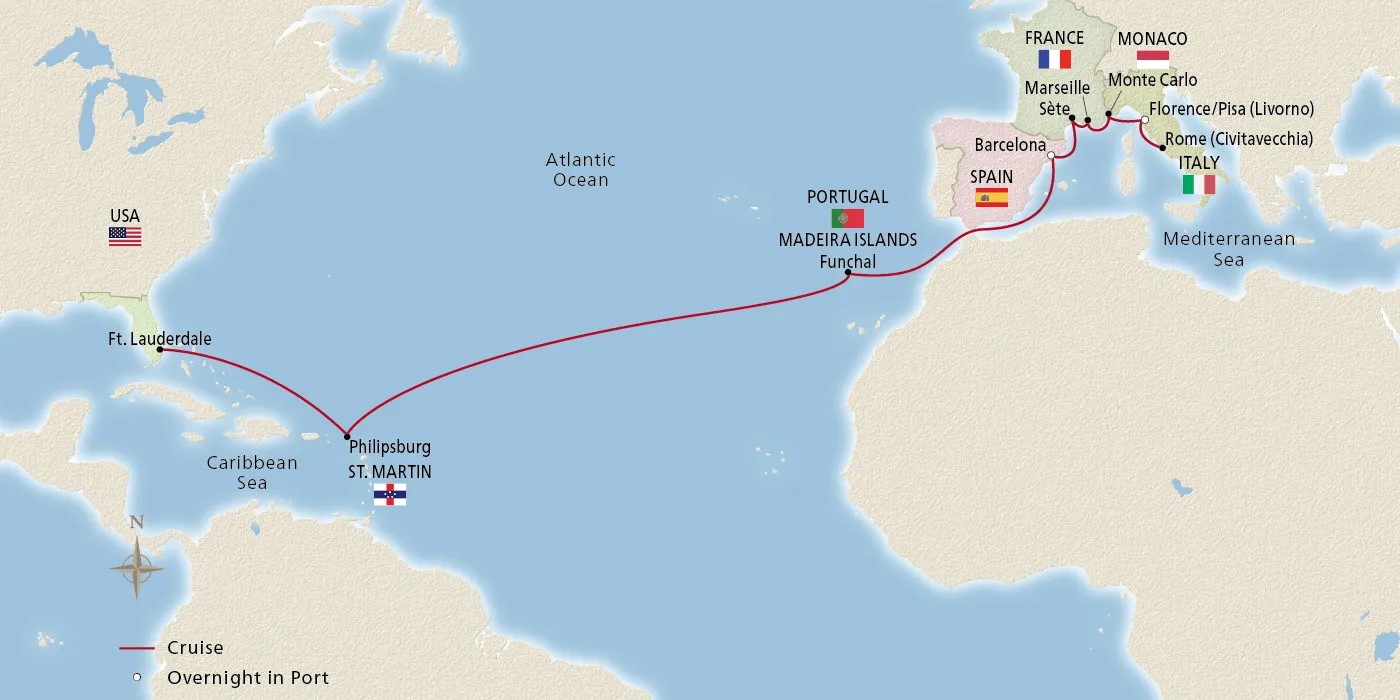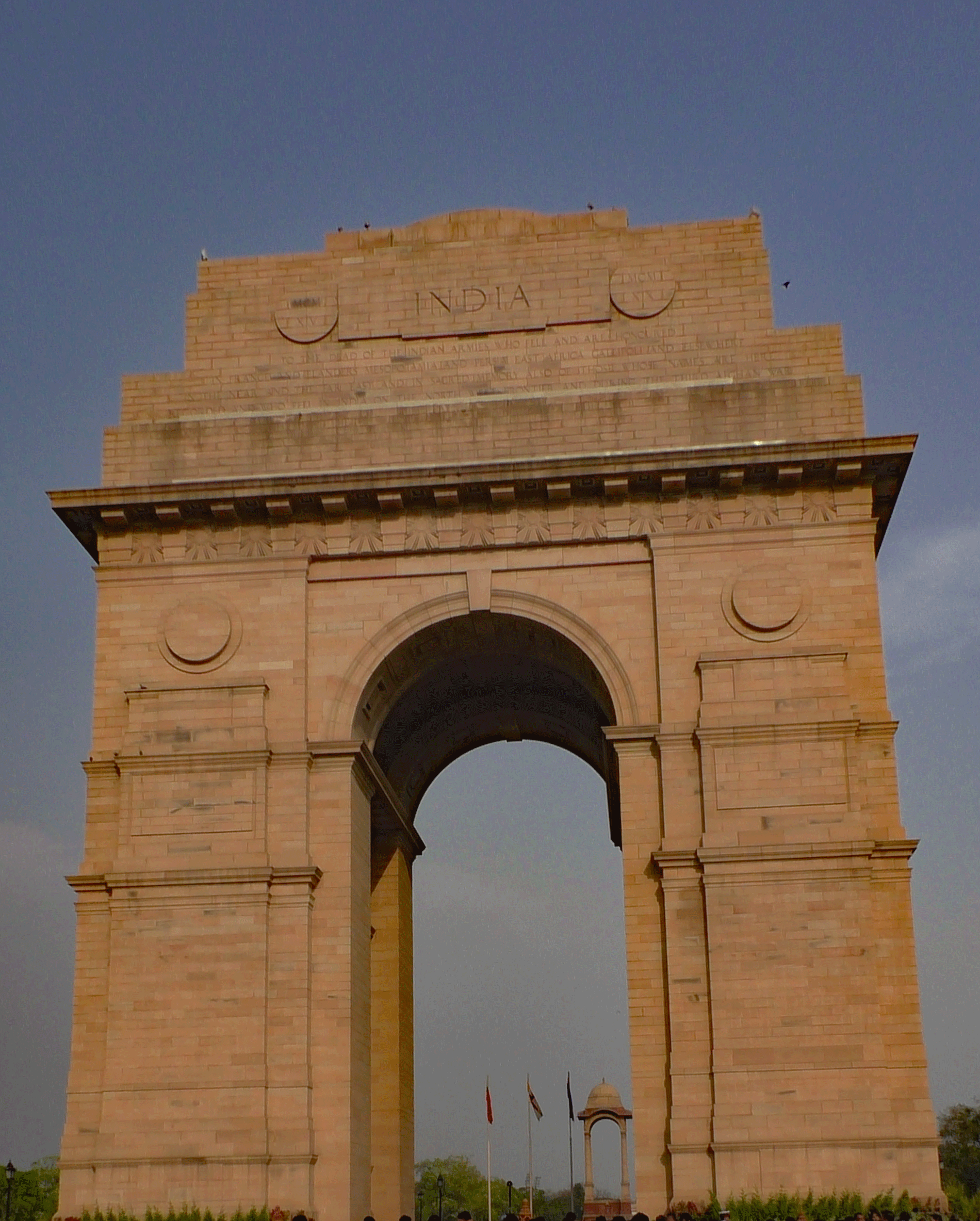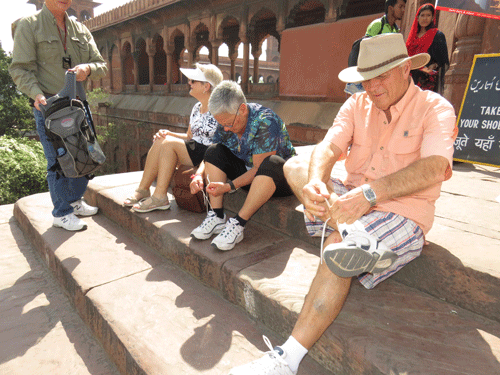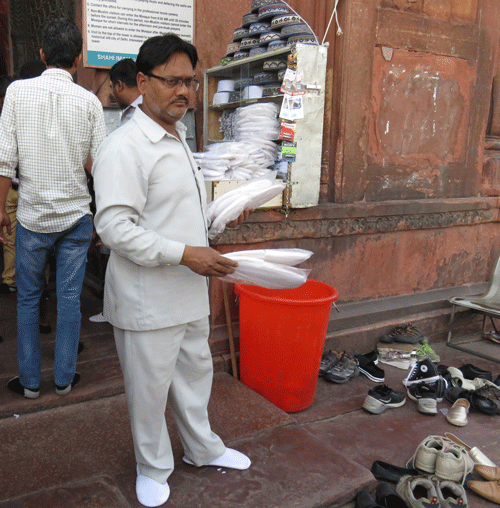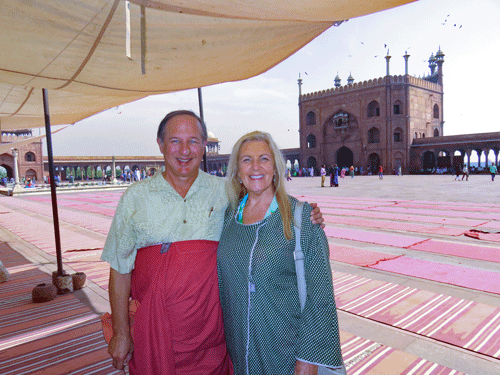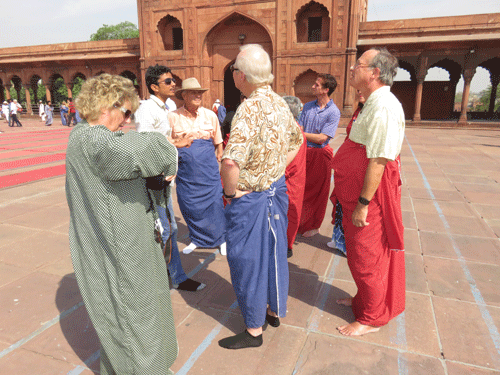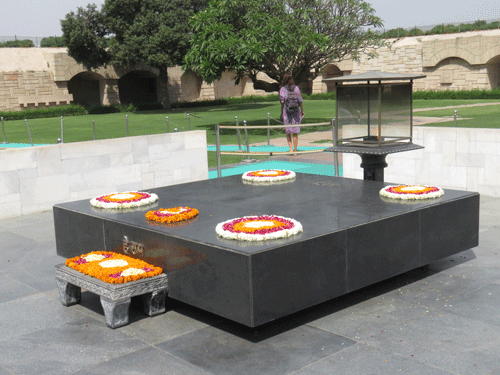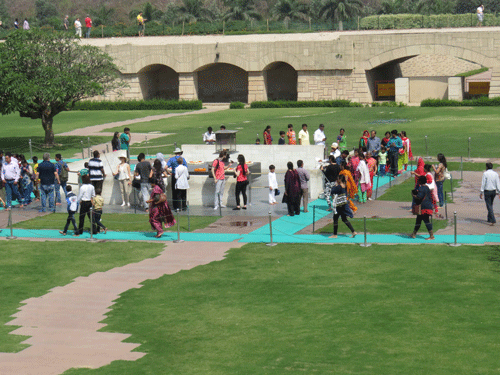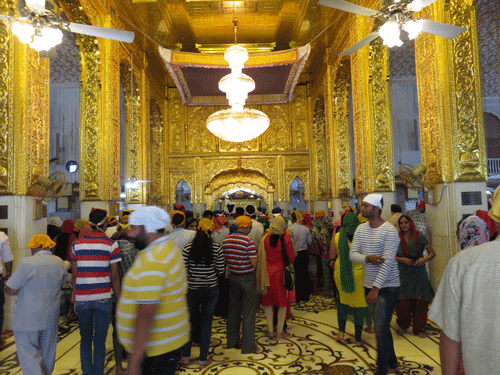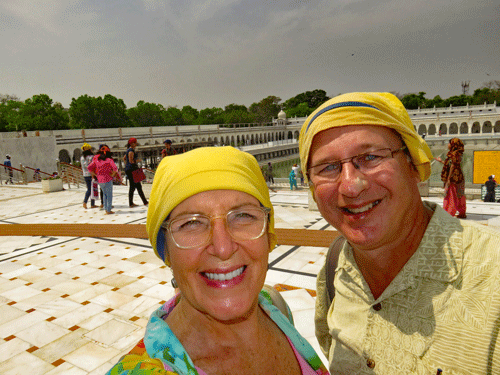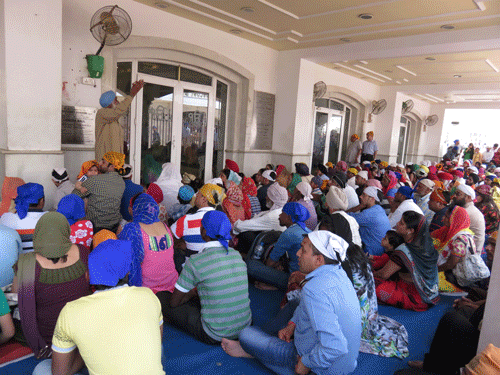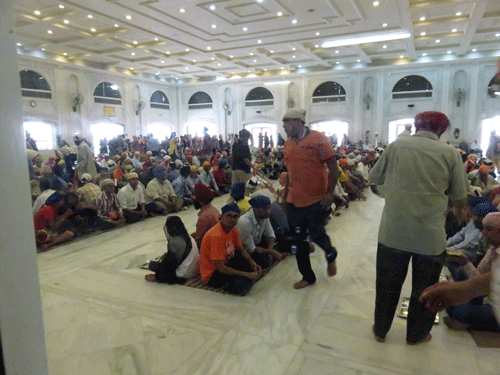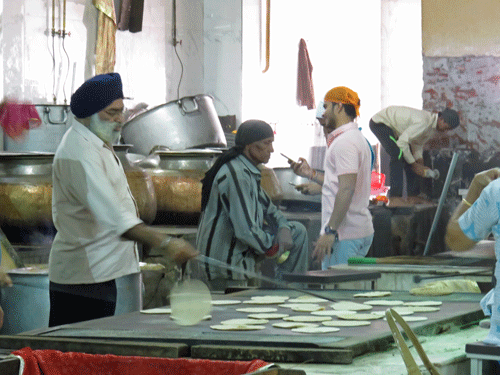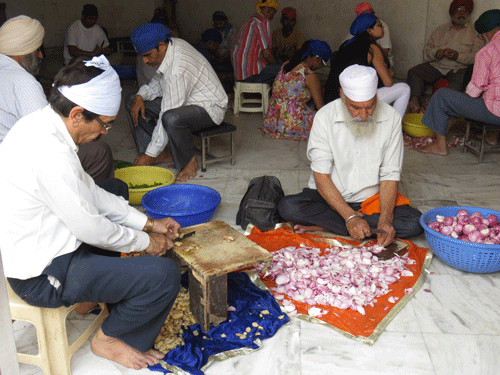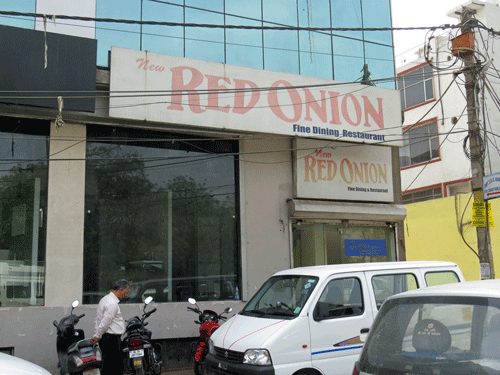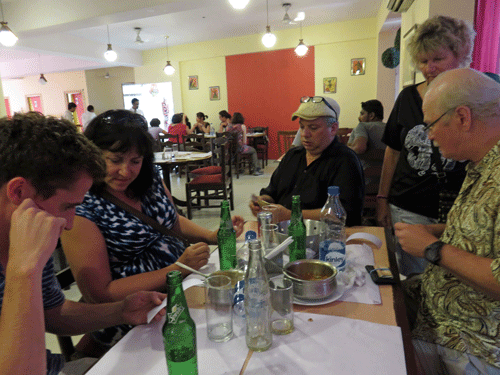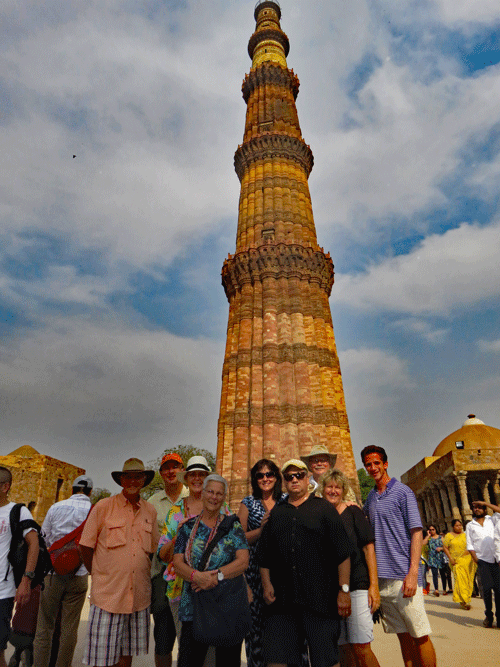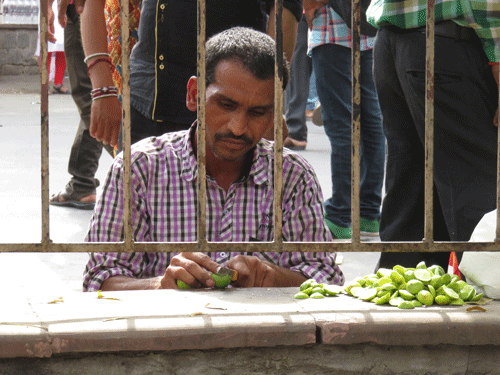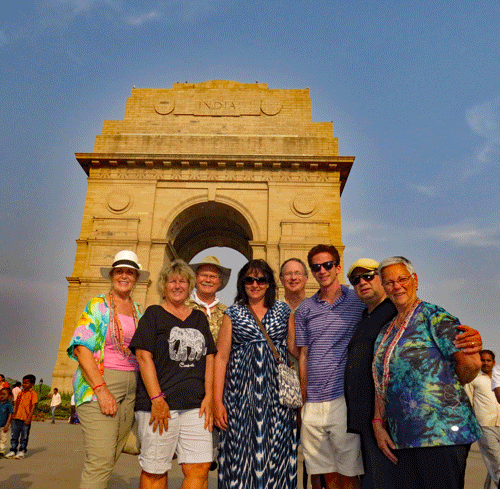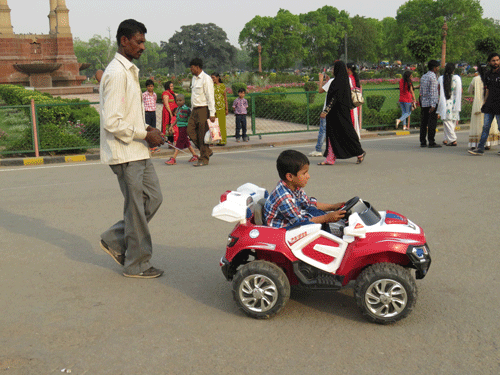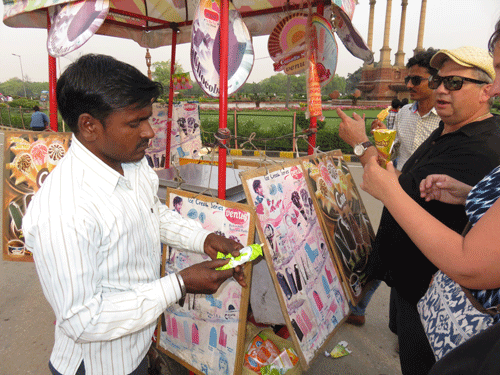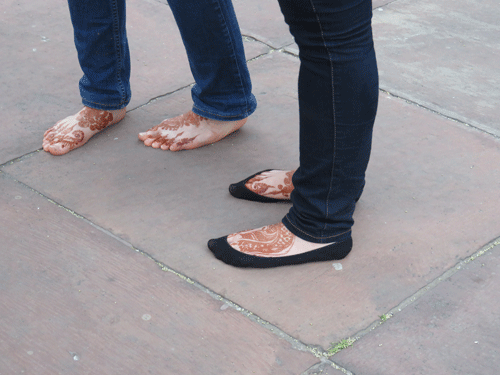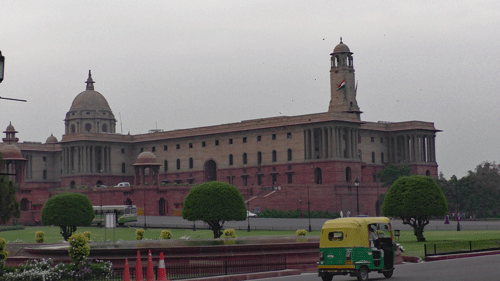Not having to start our tour until 9am was a minor luxury in itself. We didn’t get much sleep the night before so we welcomed the opportunity to go to bed a little earlier and not be rushed in the morning.
We met with the owner of Let’s Go India, Ramesh Kumar, at 9 am to go over our schedule for the day. We had originally planned to see 10-12 different sites but after our experience in Agra we realized that was unrealistic and we pared the list down to 5 sites topped off by a drive past the President’s House. Unless you are an aficionado of ancient Indian architecture or history, the differences between many cultural sites will be lost on the casual observer. If spending more time here I would look at balancing the visits to temples, tombs and forts with other more contemporary tourist sites, museums and markets. We had 1 day here, enough time to only scratch the surface.
Our guide for today was a young man, JHendra Singh (we called him Jeet), who moved here from his hometown some distance away since he is able to work as a guide every day in Delhi while finding work in his hometown was difficult…
Throughout the day we would encounter street vendors (selling all different types of trinkets and souvenirs), beggars and Tuk Tuk drivers. They range from being extremely aggressive (starting to follow us into our bus) to mildly persistent. Having a car or driver is essential to provide some refuge as you move from spot to spot. Some parts of the city on our tour were worse than others in this regard. We were hardly there long enough to try to really figure things out, but this is not a city for casual walking unless you get some information in advance about where and when this may be possible without being constantly approached.
Jama Masjid was our first stop and is the largest Mosque in Delhi with room to accommodate 25,000 worshipers. In most places, shorts below the knee were acceptable, but here you had to wear a cover/robe unless you were wearing long pants. Women had to wear them as a robe, men wore them as a skirt with the sleeves tied around the waist. They had them available to use free of charge but would accept a small tip (10 Rs). No shoes were allowed and but they had paper slippers you could use if desired. This mosque was built in the same timeframe as the Taj Mahal and has 3 gates, 4 towers and 135 foot tall minarets. There was a sign indicating that you could climb to the top of one of the minarets, but we didn’t investigate any further. Admission was free, but if you wanted to take pictures you had to buy a camera pass for 300 Rs ($5 USD) per camera.
After about 1 hour we got back in our bus and headed over to Raj Ghat which is a memorial to Mahatma Gandhi. It also marks the spot where he was cremated back in 1948 after he was assassinated. The memorial is small, simple and features an eternal flame. Admission was free, but you had to pay 10Rs is you wanted to check your shoes. There were shelves available if you wanted to leave your shoes at the entrance at your own risk. While we paid the 10Rs we have never heard of anyone getting their shoes stolen at a place like this, but it has probably happened. The memorial is a low, square stone, maybe 12 feet on a side, covered with black marble and features an eternal flame in a glass enclosure at one end. This is a peaceful place, made for reflection and contemplation about what Mahatma Gandhi meant to the Indian people. We spent about 45 minutes wandering around the grounds before heading off to our next stop.
We arrived at the Gurudwara Bangla Sahib about 11:45. Gurudwara Bangla Sahib is one of the most prominent Sikh houses of worship in Delhi which is actually a compound consisting of several structures including the Gurudwara (main temple with a large golden dome), tall flag pole, Sarovar (holy pond), school and an art gallery. Before we entered the temple we were escorted to a small foreign visitors room where we were required to remove our shoes, including socks, and wear a scarf covering our hair, hats that may also cover your hair were not allowed, you had to wear their special scarf. Once we had our scarves in place and our shoes removed we walked into the temple after first passing thru a small pool of water to clean our feet. We fell into a long line of other visitors and slowly moved into the temple itself where we witnesses a ceremony that seemed to be continuous and never ending. Once we looped around the central ceremony area we exited the temple by a large pond. The water in the pond is said to have healing properties and is taken back to their homes by Sikhs throughout the world. On the other side of the complex was another large building where they would be serving a meal called the Langar. Since we were there around noon we were able to witness the entire process. At first we thought it was some sort of a soup kitchen until we learned that this food is available to all visitors regardless of religion or social status and is considered to be part of the experience when you visit. Volunteers prepare the food in a huge kitchen and then serve it on metal trays to the 500 people waiting in a large room, sitting back to back on long narrow carpets. We were able to walk thru the kitchen and observe them preparing the food and then serving it to the masses.
Our own lunch was next and our guide suggested the Red Onion which was on the second floor in the Saket area, near the Hilton Garden Inn where we stayed the first night. If I had it to do over again, I would have spent more time planning the day and determine where we would be for lunch and then select the restaurant myself. The Red Onion was OK, but not a place I would have chosen on my own and wasn’t at the same level as the restaurant we had in Agra.
NOTE: Whenever we ate as a group on this trip, the restaurant had no difficulty preparing separate checks after we asked.
Lunch took about an hour and afterwards we had asked our guide to take us to a tourist shop selling souvenirs. We arrived at a 3 level store which consisted of a variety of independent vendors selling rugs, marble elephants and similar items made in India but not the touristy souvenirs and post cards we were looking for. Unless you specifically desire to shop for rugs, marble or other items like that, I would tell your guide – NO SHOPPING period. If you try and describe a certain type of tourist shop, you will likely end up at a shop like this. We left after 5 minutes. I would suggest going to the airport early where you will find all the post cards, T shirts and other items in the Delhi airport shops you could possibly want.
The Qutub Minar Complex was our next stop and we arrived there about 3:15. The Qutub Minar is the tallest brick minaret in the world (240 feet tall) and was built in 1193 by the Sultan as a victory tower to proclaim his supremacy over vanquished Hindu rulers. You can’t go inside or climb to the top but we enjoyed walking around the grounds and looking at the various other structures in the complex.
On the way back to our bus we passed by a stand selling limeade, but you couldn’t get them to take away, as it was served in real glass glasses that had to be returned so you had to stand there and drink them on the spot.
Our final stop was India Gate which is a memorial to the 90,000 Indian Army soldiers who were killed in WW I, the Northwest Frontier Operations and the 1919 Anglo-Afghan War and it looks very similar to the Arc de Triomphe in Paris. Construction was started in 1921 and was completed in 1931 and remains a popular attraction for locals and tourist alike. Unlike the Arc de Triomphe in Paris, you cannot go up to the top and the base is surrounded by a low, black chain fence with Indian sailors standing guard. One of the guards was actively walking about, shooing away tourists who touched the fence or appeared as if they may step over the boundary. Another sailor with a rifle stood still near the entrance to the interior of the gate and functioned as an honor guard. There wasn’t any elaborate changing of the guard ceremony that you may observe at other memorials around the world.
The atmosphere around India Gate was similar to what you might find at a small county fair. There were people selling balloons, ice cream, unique Indian street food, post cards and booklets. Small radio controlled kiddie cars were used to give rides to children as the operator walked behind controlling the throttle or maybe steering the entire car. The children were moving the wheel, but we couldn’t tell the if the car was responding to children’s input or if the operator was simply moving the car according to how the kids appeared to be spinning the wheel.
Rashtrapati Bhavan (Presidents House) was nearby and we drove by to take pictures looping around a traffic circle several times until everyone had a chance to see the house several times and take some pictures. This massive house was formerly home to the British Viceroy and has 340 rooms and over 2.5 KM of corridors. Tours are available, but must be made in advance.
We were back in our hotel by 5:30 pm. We stayed in our room packing our bags and relaxing for the rest of the evening. Our next event was checkout at noon tomorrow and then off to the airport for our flight to Dubai.

